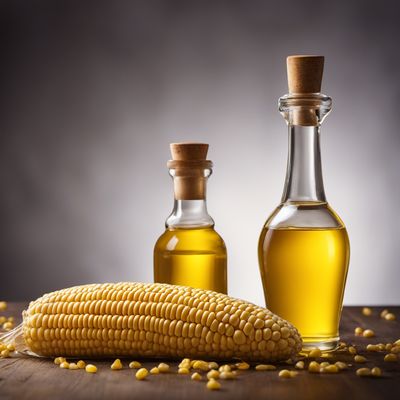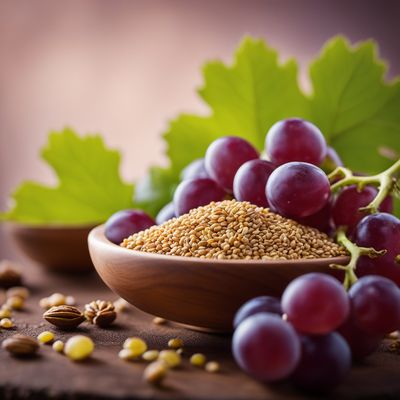
Ingredient
Safflower seed oil, edible
The Golden Elixir: Unveiling the Secrets of Safflower Seed Oil
Safflower seed oil is a pale yellow, flavorless oil extracted from the seeds of the safflower plant. It has a high smoke point, making it suitable for various cooking methods such as frying, sautéing, and baking. The oil has a light texture and a neutral taste, allowing it to enhance the flavors of other ingredients without overpowering them. Its appearance is clear and transparent, with a slight golden hue.
Origins and history
Safflower seed oil has a rich history dating back to ancient Egypt, where it was used for medicinal and cosmetic purposes. It is believed to have originated in the Middle East and gradually spread to other regions, including India, China, and Europe. In traditional Chinese medicine, safflower seed oil was used to promote blood circulation and alleviate pain. Over time, it gained popularity as a cooking oil due to its health benefits and versatility.
Nutritional information
Safflower seed oil is a good source of monounsaturated fats and contains omega-6 fatty acids. It is low in saturated fats and cholesterol, making it a heart-healthy choice. One tablespoon of safflower seed oil provides approximately 120 calories.
Allergens
Safflower seed oil is generally considered safe for individuals with common food allergies, as it is not known to be a common allergen.
How to select
When selecting safflower seed oil, look for a reputable brand that uses cold-pressed or expeller-pressed methods to extract the oil. Check the label for any additives or preservatives. Opt for oils that are stored in dark glass bottles to protect them from light exposure, which can degrade the quality.
Storage recommendations
To maintain the freshness and quality of safflower seed oil, store it in a cool, dark place away from direct sunlight. It is best to keep it tightly sealed to prevent oxidation. Properly stored, safflower seed oil can last up to a year.
How to produce
Safflower plants can be grown in a variety of climates, but they thrive in warm, dry conditions. To produce safflower seed oil, the seeds are harvested from the plant and then mechanically pressed to extract the oil.
Preparation tips
Safflower seed oil can be used in a variety of cooking methods, including frying, sautéing, and baking. Its high smoke point of around 450°F (232°C) makes it suitable for deep-frying. It can also be used as a base for salad dressings or as a finishing oil to drizzle over dishes. When using safflower seed oil, it is important to note that a little goes a long way, so use it sparingly to avoid overwhelming the flavors of the dish.
Culinary uses
Safflower seed oil is commonly used in various cuisines around the world. It is often used as a cooking oil for stir-fries, roasting vegetables, and pan-frying meats. Its neutral flavor makes it a versatile ingredient in salad dressings, marinades, and sauces. Additionally, safflower seed oil can be used in baking to create moist and tender baked goods.
Availability
Safflower seed oil is commonly available in most grocery stores, supermarkets, and online retailers. It is cultivated in countries such as the United States, Mexico, India, and Argentina.
More ingredients from this category » Browse all

Pumpkin seed oil
Liquid Gold: Unveiling the Richness of Pumpkin Seed Oil

Maize oil, edible
Golden Elixir: Unveiling the Secrets of Maize Oil

Almond oil
Liquid Gold

Soya bean oil, refined
The Versatile Oil: Refined Soya Bean Oil

Peanut oil, edible
Liquid Gold: Unveiling the Versatility of Peanut Oil

Sesame seed oil, edible
The Golden Elixir: Edible Sesame Seed Oil

Linseed oil
The Golden Elixir: Linseed Oil

Grape seed oil
The Versatile Elixir

Sunflower seed oil, edible
Golden Elixir from the Sun

Rape seed oil, edible
The Golden Elixir: Edible Rapeseed Oil

Cotton seed oil, edible
The Versatile Cotton Seed Oil

Walnut oil
Liquid Gold: Unveiling the Richness of Walnut Oil